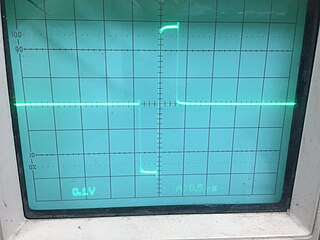 W
WSynchronization is the coordination of events to operate a system in unison. For example, the conductor of an orchestra keeps the orchestra synchronized or in time. Systems that operate with all parts in synchrony are said to be synchronous or in sync—and those that are not are asynchronous.
 W
WBlack and burst, also known as bi-level sync and black burst, is an analogue signal used in broadcasting. It is a composite video signal with a black picture. It is a reference signal to synchronise video equipment, in order to have them output video signals with the same timing. This allows seamless switching between two video signals.
 W
WCADP is a toolbox for the design of communication protocols and distributed systems. CADP is developed by the CONVECS team at INRIA Rhone-Alpes and connected to various complementary tools. CADP is maintained, regularly improved, and used in many industrial projects.
 W
WThe DIN sync standard, also called Sync24, defines a synchronization interface for electronic musical instruments.
 W
WA GPS clock, or GPS disciplined oscillator (GPSDO), is a combination of a GPS receiver and a high-quality, stable oscillator such as a quartz or rubidium oscillator whose output is controlled to agree with the signals broadcast by GPS or other GNSS satellites. GPSDOs work well as a source of timing because the satellite time signals must be accurate in order to provide positional accuracy for GPS in navigation. These signals are accurate to nanoseconds and provide a good reference for timing applications.
 W
WIn a spark ignition internal combustion engine, Ignition timing refers to the timing, relative to the current piston position and crankshaft angle, of the release of a spark in the combustion chamber near the end of the compression stroke.
 W
WMenstrual synchrony, also called the McClintock effect, is an alleged process whereby women who begin living together in close proximity experience their menstrual cycle onsets becoming more synchronized together in time than when previously living apart. "For example, the distribution of onsets of seven female lifeguards was scattered at the beginning of the summer, but after 3 months spent together, the onset of all seven cycles fell within a 4-day period."
 W
WReproductive synchrony is a term used in evolutionary biology and behavioral ecology. Reproductive synchrony—sometimes termed "ovulatory synchrony"—may manifest itself as "breeding seasonality". Where females undergo regular menstruation, "menstrual synchrony" is another possible term.
 W
WThe SMC-70 is a microcomputer that was produced by Sony and released in 1982. The system was initially released for general office use in the United States, with the SMC-70G and SMC-70GP designed for professional video generation, for example in cable television applications, and digital video effect generation. It was the first computer that used the recently invented 3.5" micro floppy disk drive that was modified to become the industry standard. Like many home and office computers of the era, it had its own specially developed version of BASIC. Sony BASIC was designed to take advantage of a color Sony Trinitron display. The SMC-70 did not run Microsoft BASIC, despite the system being designed to compete in the US market. With optional expansion ROMs the system could display kanji characters.
 W
WTime-division multiplexing (TDM) is a method of transmitting and receiving independent signals over a common signal path by means of synchronized switches at each end of the transmission line so that each signal appears on the line only a fraction of time in an alternating pattern. This method transmits two or more digital signals or analog signals over a common channel. It can be used when the bit rate of the transmission medium exceeds that of the signal to be transmitted. This form of signal multiplexing was developed in telecommunications for telegraphy systems in the late 19th century, but found its most common application in digital telephony in the second half of the 20th century.
 W
WA timing mark is an indicator used for setting the timing of the ignition system of an engine, typically found on the crankshaft pulley or the flywheel, being the largest radius rotating at crankshaft speed and therefore the place where marks at one degree intervals will be farthest apart.
 W
WTri-level sync is an analogue video synchronization pulse primarily used for the locking of HD video signals (genlock).